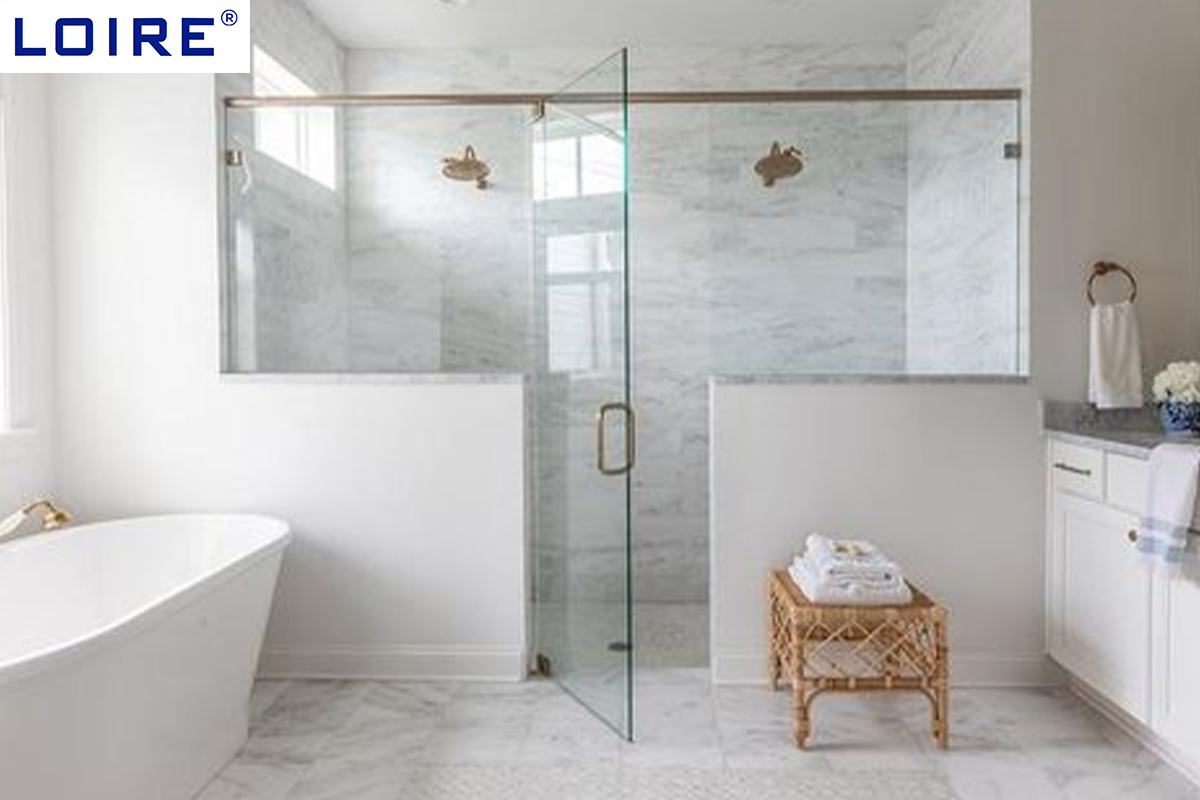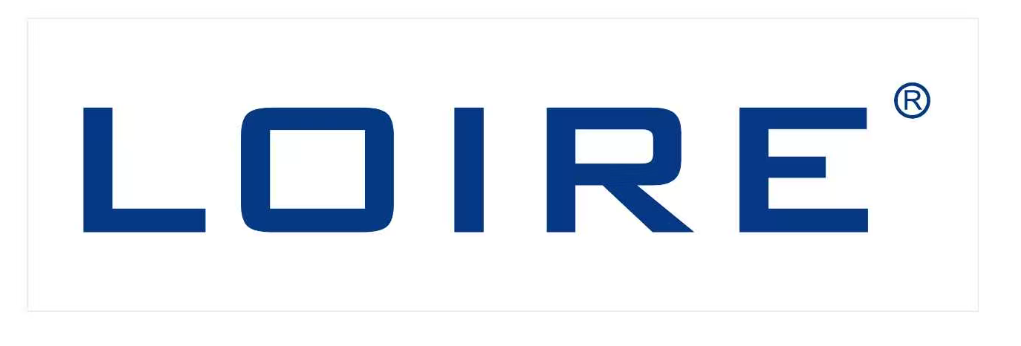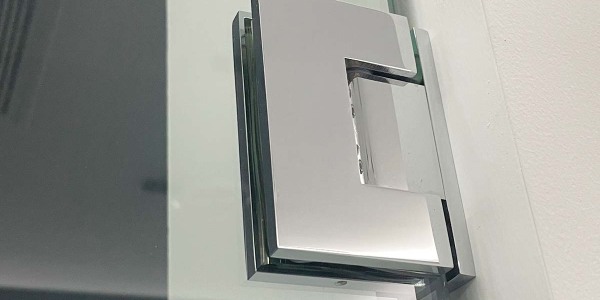Components of frameless shower door

Frameless shower door is a popular choice in modern bathroom design, known for its' sleek and minimalist appearance. It is typically constructed from various components that come together to create a functional and aesthetically pleasing shower enclosure. Here are the key components of frameless shower door:
1. Glass Panels:
The most prominent and critical component of a frameless shower door is the glass panel. This tempered safety glass is thick and durable to ensure safety and structural integrity. The glass can vary in thickness, with common options being 3/8-inch or 1/2-inch, depending on the desired level of sturdiness and aesthetics.
2. Hinges:
Frameless shower door often use heavy-duty hinges to secure the glass panels to the wall or the adjacent fixed glass panel. These hinges are typically made of high-quality materials and are designed to support the weight of the glass while allowing it to swing open and closed smoothly. They come in various styles and finishes to match the bathroom's decor.
3. Handles and Knobs:
Handles and knobs provide a means to open and close the frameless shower door. These components can come in a variety of shapes, sizes, and finishes, allowing homeowners to customize the look of their shower enclosure. Handles are typically used for full-size doors, while knobs are common for smaller panels.
4. U-Channels or Header Bars:
To stabilize and secure the glass panels, frameless shower door may use U-channels or header bars along the top or sides of the enclosure. These components add extra support and help to prevent any movement or wobbling of the glass.
5. Seals and Gaskets:
Seals and gaskets are crucial for creating a watertight seal around the frameless shower door, preventing water from leaking out onto the bathroom floor. These components are typically made of materials like vinyl or rubber and are strategically placed where the glass meets the wall, floor, and other glass panels.
6. Clips and Brackets:
Clips and brackets are additional hardware components used to secure the glass panels to the wall or other fixed elements in the shower enclosure. These help to distribute the weight and keep the glass in place while providing a clean and unobtrusive appearance.
7. Rollers and Tracks (For Sliding Doors):
In the case of frameless sliding shower doors, rollers and tracks are essential components. Rollers allow the door to glide smoothly along the track when opened or closed. High-quality rollers and tracks are necessary for a seamless and reliable sliding mechanism.
8. Towel Bars or Hooks (Optional):
Some frameless shower doors may include towel bars or hooks for added functionality. These components can be attached to the glass or wall, providing a convenient place to hang towels or other bathroom accessories.
These components work together to create a sturdy and attractive frameless shower enclosure. The choice of materials, finishes, and design elements can be customized to match the overall style and aesthetics of the bathroom, allowing homeowners to create a shower space that is both functional and visually appealing.






